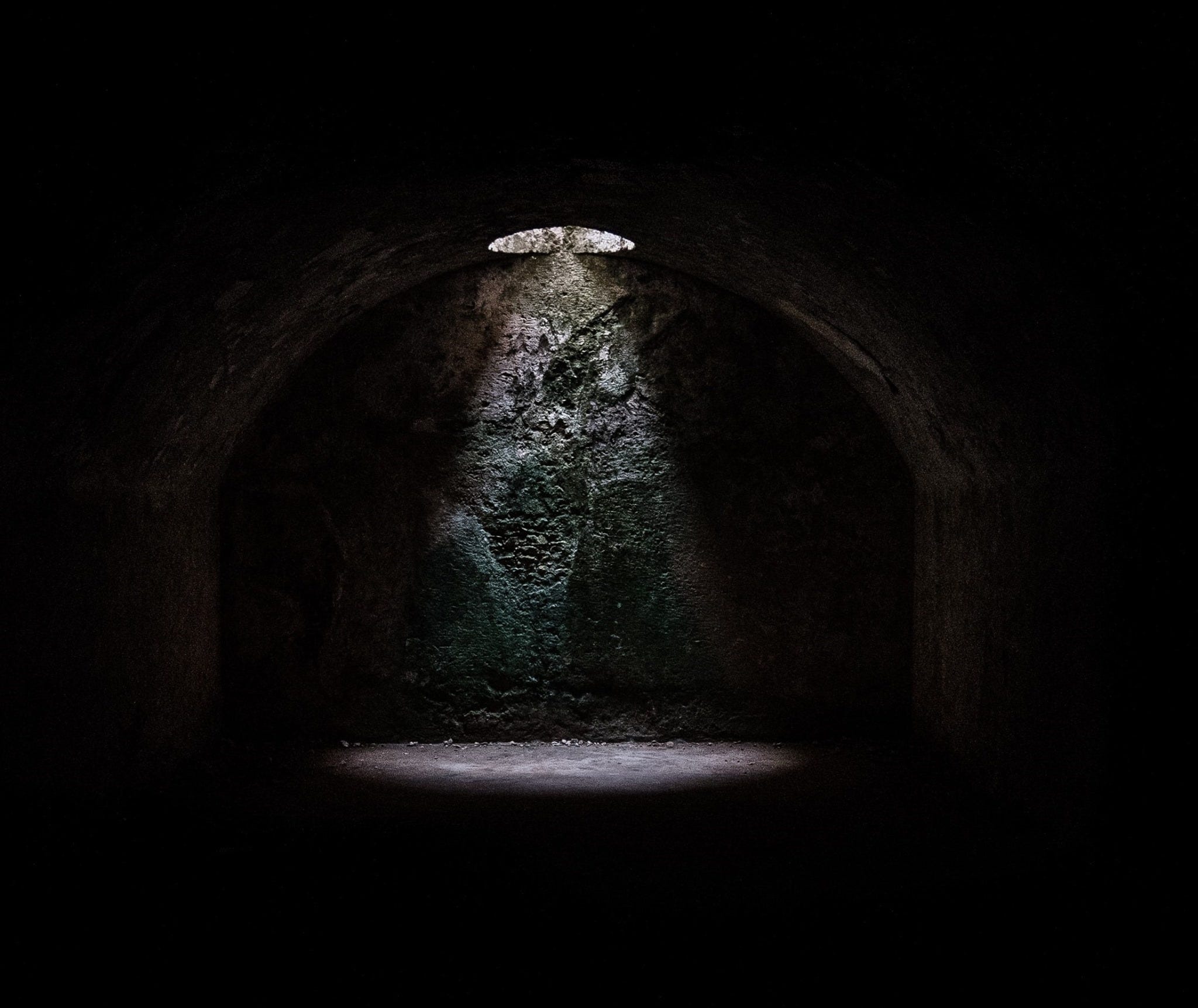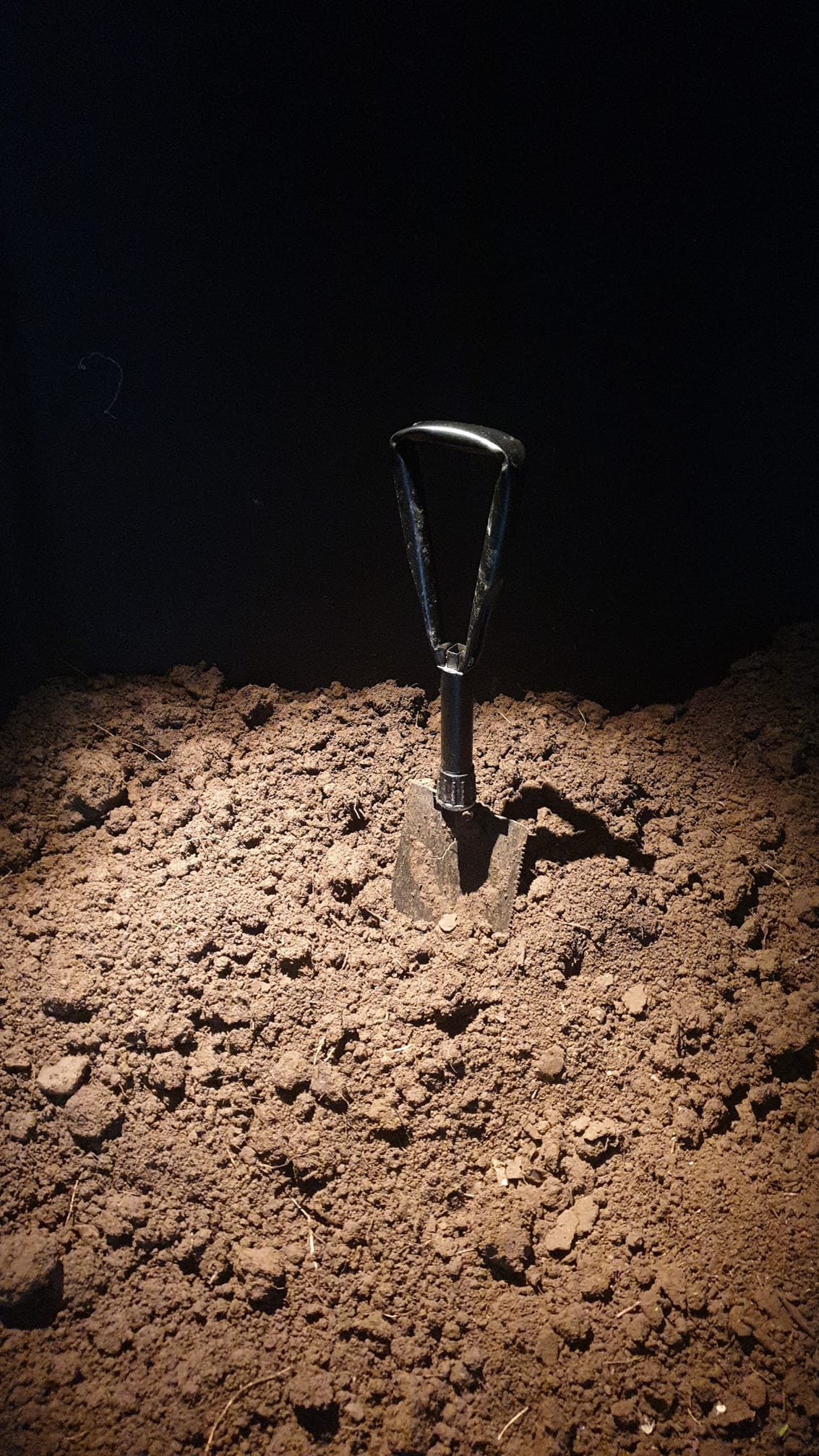Notes From The Dirt Locker in ‘Dig’ (Review)
Fever Dream Theatre can’t shovel its way out of a global crisis


Two men are digging, digging, digging through the endless pile of thick London clay which hulks against the back wall of a cold and claustrophobic shipping container in Waterloo. In their minds they are building a tunnel deep beneath the earth, hoping to escape with their lives. The smell of dirt and metal and sweat drift through the space and we audience members stand around the edges of the space, unnoticed and unacknowledged, like poles of timber shoring up the roof.
Actor Gwithian Evans, as tunneler Christophe, wields a gentle greenhorn foil to his swarthy and bombastic partner Tom, played by William McGeough, as they move thousands of pounds of earth in order to bring about their freedom. Both are entirely absorbed in their conversation with each other, which passes by in a carousel of jokes and tender stories to stave off the despair of not having seen daylight in weeks, giving curt instructions to the other about minding their work, and nervously pausing to listen for the sound of anyone above who might discover them. The tension is palpable: each time one of them strains toward the ceiling hoping to catch a sound, we tilt closer to the spot as well. The occasional rumble of traffic outside the space is forgotten as we delve deeper into the quiet world of the tunnel.
Production company Fever Dream Theatre’s ethos is to create unique experiences “unfettered by stage, sets or lighting.” Dig is intended to play with how audiences experience theatre, joining the actors in an enclosed space where they can share in the psychological journey that the characters undergo. However, the production itself isn’t interactive so much as site-responsive: at times Evans and McGeough move nearer to their audience but take no more notice of us than as if to brush aside a cobweb. Though at times later in the performance the script has them speaking directly to us, our input isn’t actually required other than to serve as silent witness to their labors — there’s nothing for us to do and nowhere for us to go or move to in order to more strongly engage with the show. It’s disappointing if you came with an expectation for high agency as the show was actively advertised as “immersive.”

That said, Dig deserved better.
Get Shelley Snyder’s stories in your inbox
Join Medium for free to get updates from this writer.
SubscribeSubscribe
A mid-March 2020 run during the early stages of the global pandemic, in a small enclosed space for 45 minutes with 2 actors and up to 12 guests, is not a recipe for a comfortable and receptive audience. Add to it the staging choice of having all occupants standing for the duration of the performance in a cold and uninsulated space (but without physical movement nor active audience engagement), and the experience can’t help but leave a bitter taste in the mouth which entirely overshadows the content and delivery of the script. If there is responsibility to be assigned, I lay it on the doorstep of both the marketing team who chose to advertise Dig as “immersive,” and the (admittedly early-stages) choice made by the Festival to allow the performance to go ahead in its chosen format. While the actors and production company deserve full recognition for the work they put in to create the performance, unfortunately the timing for this particular production could not have contrived to be worse.
Dig itself is genuinely tender and in the moment we feel the urgency and the despair of these characters, and now in the real-world throes of self-isolation and quarantine, the stark realities of ongoing close quarters with little distraction are now very real to most of us. For those who were lucky enough to see Dig before the Festival was curtailed, we can now much more keenly reflect on the characters’ physical and emotional strains.
While I wouldn’t endorse a continued use of the “immersive” marketing tag for this production, I’m pleased that Fever Dreams Theatre designs all of its work to be fully portable — free from the technical constraints of traditional theatre spaces — and therefore accessible to the furthest reaches of the country.
Dig is a show worth seeing which could easily go on the road, as long as there is a healthy supply of dirt to be had when they get there.
Dig has concluded.
NoPro is a labor of love made possible by our generous Patreon backers. Join them today!
In addition to the No Proscenium web site, our podcast, and our newsletters, you can find NoPro on Twitter, Facebook, YouTube, Instagram, in the Facebook community Everything Immersive, and on our Slack forum.
Office facilities provided by Thymele Arts, in Los Angeles, CA.